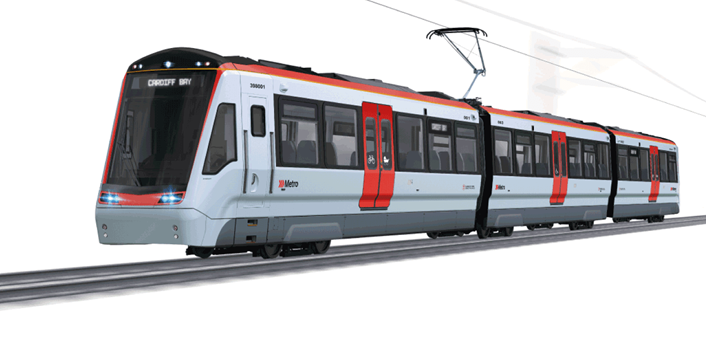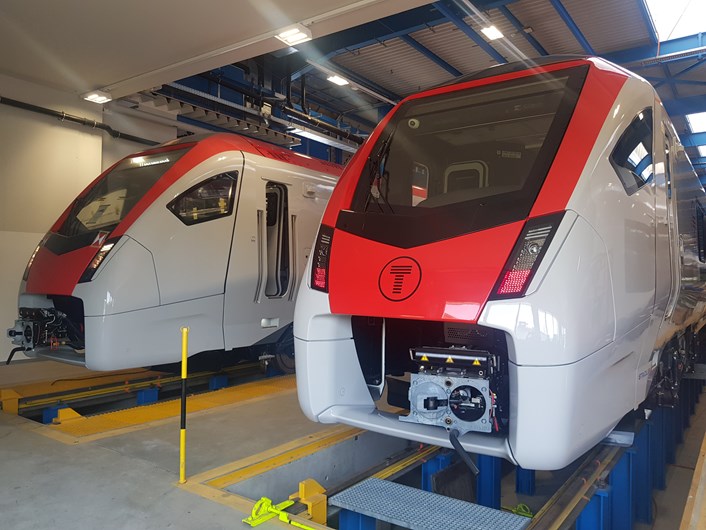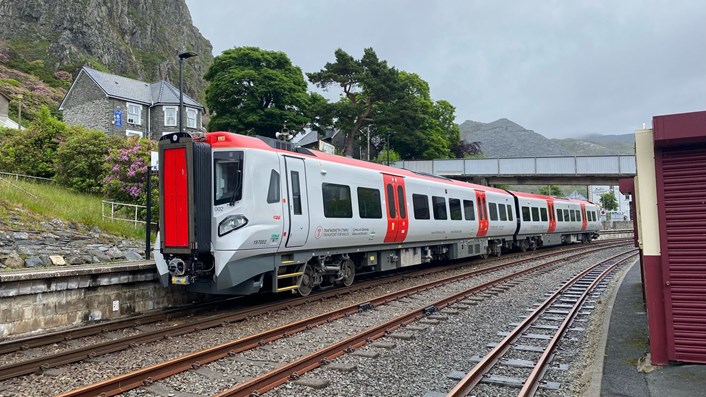18 Nov 2021
The introduction of our new fleet of trains and tram-trains will completely transform the experience of customers who travel with us throughout Wales and the borders. However, they will also provide a major step change in our plans to decarbonise the transport network and become a more sustainable organisation in light of the challenges of climate change.
There are three main ways that our new rolling stock will contribute to making our network cleaner and greener, as we work towards our target of achieving net-zero carbon emissions by 2030 and meet the goals of the Well-being of Future Generations Act. We spoke to our Director of Transport Operations, Alexia Course, to find out more about the difference the new trains will make on all parts of our network
Electrification
We’re now well underway with our plans to electrify the Core Valley Lines (CVL) as part of the development of the South Wales Metro. This involves putting up Overhead Line Equipment (OLE) above the tracks, which will then power the new trains and tram-trains that we’ll be introducing to services once the lines are energised.
Both the tram-trains and the FLIRT tri-mode trains that will operate Metro services on the CVL will be powered by a combination of overhead electric power and batteries stored onboard. As part of our “smart electrification” plans, the trains will switch between electric and battery power as they travel along the line. This innovative form of electrification means we avoid having to do expensive, time-consuming work such as raising bridges and adjusting historic station canopies.
The electrification of the CVL significantly reduces our impact on the environment, in terms of noise, emissions and the burning of fossil fuels. The overhead wires will be entirely powered by renewable sources.
Better diesel trains
Outside of the CVL, the trains we’re introducing on Wales and Borders services will be diesel trains. Whilst ideally we would want to move away from burning fossil fuels, most of the network has not been electrified, while technologies such as batteries and hydrogen remain in their early stages of development and would still need extra infrastructure.
We’re working closely with Network Rail, who own and manage most of the Wales and Borders rail network, as they develop their Traction Decarbonisation Network Strategy. This proposes more electrification of the network and creating infrastructure for battery and hydrogen trains in the future.
However, this isn’t to say our new diesel trains won’t be a major improvement on current trains. They will be fitted with modern engines that will enable a 40% reduction in fuel consumption, an 84% reduction in NOx and a more-than-90% reduction in particulates when compared to our current trains. These not only contribute to climate change globally but can also be harmful for people living next to the railway. Removing older trains with high emissions and replacing them with cleaner, more efficient trains will minimise their environmental impact overall and also provide better air quality for lineside neighbours.
The Class 230 trains, which have been upcycled from former London Underground trains in a sustainable process, are hybrid trains which can be powered off the batteries for a whole journey. This provides a significant reduction in emissions on the Borderlands Line between Wrexham and Bidston, as well as providing increased capacity and better facilities for customers. These trains have been undergoing extensive testing in recent months and will begin to enter service during 2022.
Our Fleet team are also working to reduce the idling of our diesel trains. Our current diesel trains need to idle in order to keep key electrical and pneumatic systems running for heating, lighting and braking systems. However, extensive idling is inefficient and creates noise for those who live next to our depots and stations. We’re currently undertaking a scheme across our network to reduce idling where possible, which will reduce emissions, fuel use and noise.
Capacity and modal shift
The benefits of our new trains are expected to go beyond improving trains on a like-for-like basis. Their introduction will allow us to improve our timetables for customers, providing faster, more frequent services and more comfortable journeys across the entire Wales and Borders network.
The South Wales Metro will see services increase to four trains per hour between Cardiff and the heads of the valleys – Treherbert, Aberdare, Merthyr Tydfil and Rhymney – while new direct services will link Llandudno and Cardiff with Liverpool, and high-quality refurbished intercity trains will be introduced between South Wales and Manchester. We’re also exploring the development of Metro schemes in North Wales, Swansea Bay and West Wales which will provide a transformation of services in those regions in the future.
This improvement in the quality and availability of services is expected to help increase demand for rail travel in Wales and the borders. This will encourage people to leave their cars behind and move onto a more sustainable form of transport, reducing the impact of motor vehicles on the environment. Further investment in the years ahead to electrify more of the network and add new stations and routes would help increase this modal shift.
By providing better integration between modes of transport, such as better walking and cycling routes to stations, improved interchanges with bus services and multi-modal ticketing that covers a range of transport options, we want to make it easier for people to make the choice to switch from driving to using public transport. This will help reduce the carbon footprint and create a more sustainable world for future generations.






